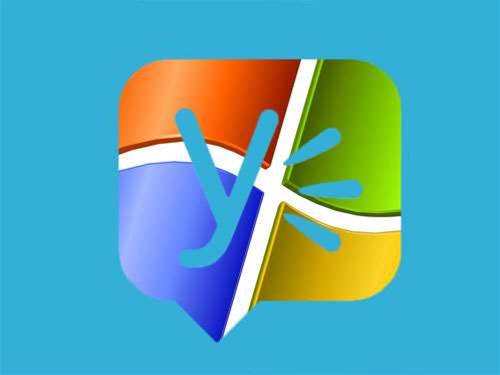When Microsoft acquired enterprise social network Yammer last year for US$1.2 billion, it was hoped that Yammer’s agile culture would rub off across other product teams in Redmond.

A little over 12 months later, Microsoft is talking of moving the monthly release cycle for Office - which in itself a novell approach by Microsoft standards - to weekly.
Agile delivery remains largely aspirational for one of the world's largest software companies. Yammer meanwhile, has run what it calls "post-agile" with fortnightly sprints.
Also largely aspirational for Microsoft is the freemium Yammer business model, which Microsoft Office marketing manager Christophe Fiessinger has cited among the three key reasons Microsoft acquired the social networking technology.
Yammer, for the uninitiated, is akin to a private enterprise version of Facebook or Twitter, which sits exclusively within the defined network of an organisation. The technology has been available free of charge since it was launched in 2008. But for advanced administrative tools, single sign-on or support, organisations pay a small per-seat fee.
“Does it mean we will get there [to a freemium model] one day? I don’t know, but it’s definitely mind boggling to see how often innovation lands in our customers' hands,” Fiessinger told journalists at the Microsoft TechEd conference on the Gold Coast last week.
Microsoft is bundling Yammer free for enterprise customers of Office 365. It is otherwise yet to convince the majority of the 200,000 organisations and eight million individual users of Yammer to pay for the enterprise version.
Redmond is instead relying on an older sales paradigm with which it is more familiar.
Security matters
A key difference between the free and enterprise versions of Yammer is Active Directory Sync.
While AD integration is useful for a variety of reasons, one of the most important is giving IT administrators the ability to ensure that people that have left the organisation don’t remain on the corporate Yammer network.
“At the end of the day you’re going to capture valuable IP, and the last thing you want is that IP to go out there and then you lose your competitive advantage and potentially you’re out of business,” Flessinger said.
It’s “definitely not a good enterprise story” that large companies are predominantly using the free version of Yammer, he said.
“Being in the enterprise world with products like Exchange and Lync and SharePoint, we care a lot about making sure IT doesn’t lose sleep with this new service.”
Microsoft's sell becomes somewhat tricky, however, when an organisation wants to connect a wider range of employees that might not have an Active Directory profile or staff email address, such as frontline staff in large retail chains.
Fiessinger says Microsoft is “doing a bunch of investment” to solve that problem, as it pushes an enterprise social networking vision of staff empowerment.
Yammer chief technology officer Adam Pisoni told the TechEd audience: “The biggest problem we face isn’t actually technology, it’s how we work.”
Experiment often, fail less
Pisoni says most companies were designed based on a set of beliefs that we don’t even agree with anymore, such as the view that it doesn’t make sense to empower individual employees.
“We built companies for a time when work was routine," he said. "No wonder it’s not working.”
Pisoni’s examples of “responsive organisations’ include US hamburger chain Red Robin, which gave frontline employees access to its Yammer network. Many of these workers previously didn’t have access to email or the company’s intranet.
Spanish fashion chain Zara built cross-functional teams around individual garments in order to turn them around - at scale - in a matter of days.
“They’ve figured out how to decrease the cost of failure so that they can increase the rate of experimentation," he said. “In this way they can rapidly try new ideas at small scale and invest in the things that are working and not invest in the things that their customers don’t care about anymore.”
Pisoni said organisations have to figure out how to be a network, embrace the connected-ness of customers, and ignore the organisational chart.
“It takes a network to serve a network," he said.
Rethinking IT
This is a radically different world to the environment Microsoft has so successfully sold into for decades. It lies at the heart of why Microsoft’s acquisition of Yammer could either deliver in spades, or fail spectacularly.
In a software-as-a-service world, Pisoni argued, IT has to shift its focus.
“IT often thinks of the business as its customer, but IT has to realise the customer is the customer - it is the customer of the company,” he said.
As an organisation that has traditionally sold to the IT department, Microsoft must now figure out if it can adopt Yammer’s model of selling straight into the business, without offending its traditional IT clients.
“I’ve seen both, and sometimes it’s not black and white,” Fiessinger says.
He cited Gartner research which shows 20 percent of enterprise social media effort is technology and 80 percent is culture and change management.
“Some of those large Australian customers, I’ve been on the phone to talk to IT or the business. The business might be very bullish, but at the end of the day IT will be asked to manage it, so they’ve got to be bought in. We’re selling to both”
Integration
To extract value out of its Yammer acquisition, Microsoft will need to do more than give it away with Office 365.
In the medium-term, Microsoft intends to integrate Yammer functionality inside many of its traditional enterprise applications, including email (Exchange), unified communications (Lync), collaboration (SharePoint) and CRM (Dynamics), to ensure users “don’t have to go to a destination to be social”.
If Microsoft otherwise struggles to convince Yammer teams to pay for the software, it is highly unlikely to move big earners like Office to a viral freemium model.
Yammer has the potential to fundamentally change Microsoft's business. But it is every bit as likely to become little more than a very expensive bolt-on.




_(22).jpg&h=140&w=231&c=1&s=0)





_(26).jpg&w=100&c=1&s=0)

 iTnews Executive Retreat - Security Leaders Edition
iTnews Executive Retreat - Security Leaders Edition












_(1).jpg&h=140&w=231&c=1&s=0)



